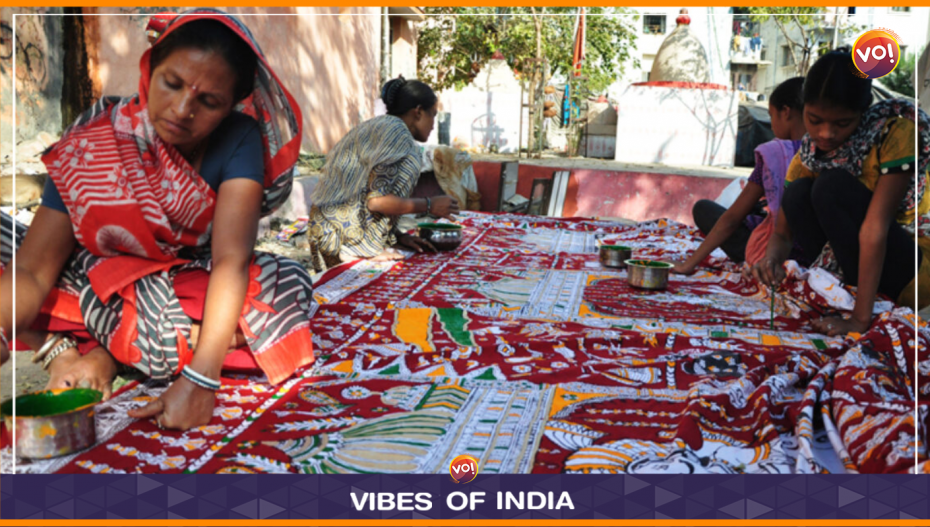The Gujarati Mata Ni Pachedi literally translates to “behind the Mother Goddess.” In Gujarat, Pachedi also refers to a textile folk art featuring Mother Goddess at the centre, with her stories and legends painted or woven around. Much like the Madhubani art from Bihar which celebrates the stories of Krishna in stoles and sarees, Pachedi finds altruistic and utilitarian use.
Adding another feather to its cap, comes the esteemed Geographical Indication (GI) tag for the traditional craft. On Wednesday, celebrated across the globe as World Intellectual Property Day, this ancient textile folk art from Gujarat was conferred the honours. Union Minister of Commerce & Industry, Piyush Goyal, presented the GI certificate during a special ceremony in Delhi.
Notably, Gujarat Council on Science & Technology (GUJCOST) applied for the GI tag in 2020. This is the 16th GI Tag for a product/ skill specific to and having originated in Gujarat.
Among other specialities from the state to have notched the GI tag are Sankheda furniture, Bhalia wheat, Agates of Cambay, Gir Kesar mango, Kutch embroidery, Pethapur printing blocks, tangaliya shawl and the Rajkot Patola.
Nearly four centuries old, this art form finds vivid display during religious observances or as a permanent fixture in homes. Art historians now back the theory that some practitioners moved from the Viramgam region to Ahmedabad city 200 years ago in search of a better livelihood. Viramgam still remains a drought-prone area.
The traditional hand-painted or block-printed hand-spun cotton cloth is usually rectangular and features the mother goddess in the centre. Bordering her image are stories and legends associated with her divinity. Natural and mineral colours are used to dye and adorn the cloth. If the cloth is square shaped and used as a canopy, it is referred to as Mata no Chandarvo.
Today, there are only a handful of chitaras (painters) living in Ahmedabad. It is hoped that with the GI status, these artisans keeping alive the unique textile-painting and block-printing tradition, will receive a shot in the arm.
Also Read: Singer Toni Braxton Shares Heart Health Scare In Interest Of Others












